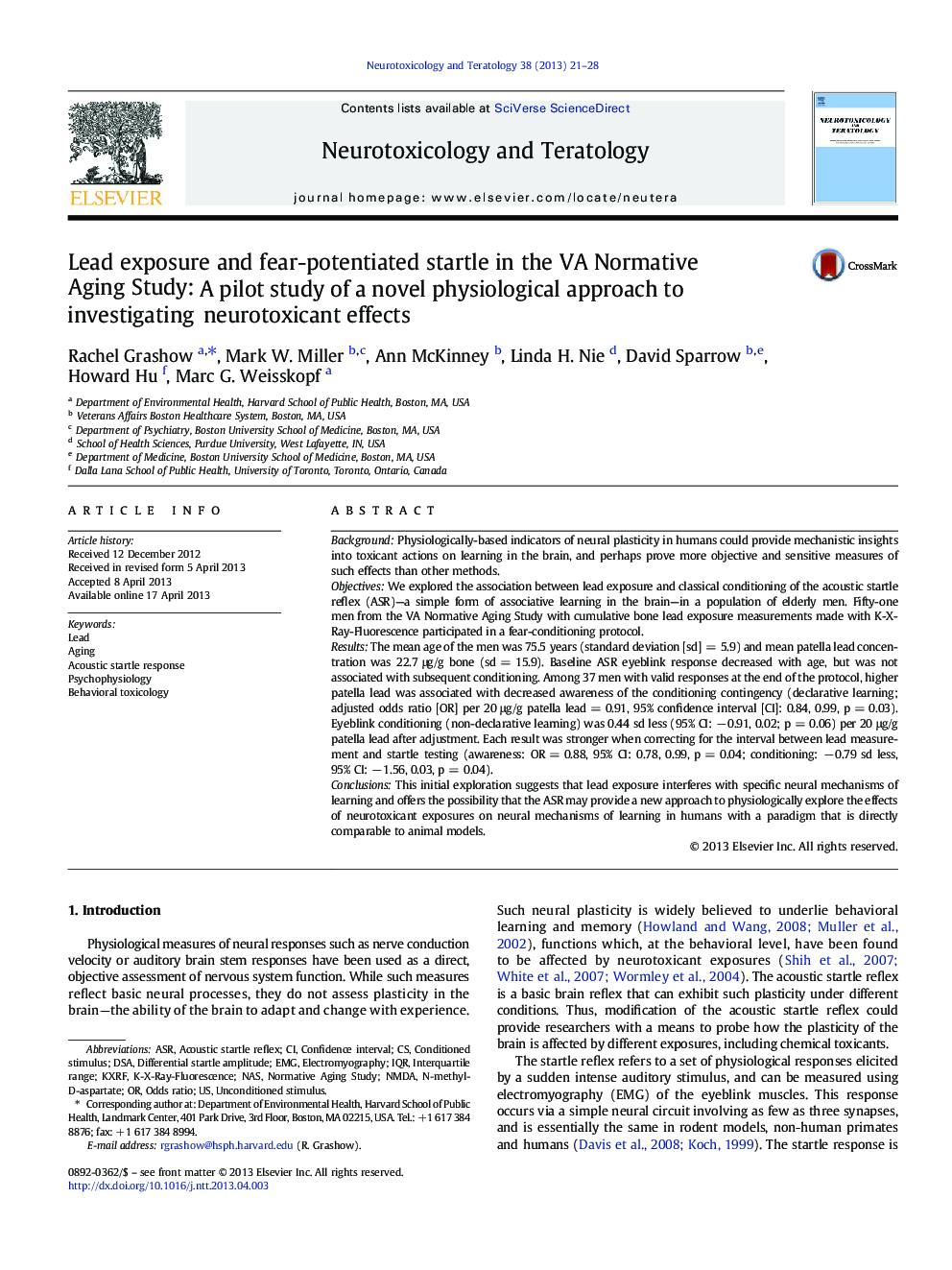| کد مقاله | کد نشریه | سال انتشار | مقاله انگلیسی | نسخه تمام متن |
|---|---|---|---|---|
| 2591299 | 1562097 | 2013 | 8 صفحه PDF | دانلود رایگان |

• The acoustic startle reflex (ASR) is a neurophysiological measure of brain function.
• The ASR can be modified through classical conditioning, a form of learning.
• Cumulative lead exposure was associated with worse ASR conditioning in humans.
• Higher patella lead was associated with reduced awareness or declarative learning.
• Neurophysiological measures of learning are affected by long term lead exposure.
BackgroundPhysiologically-based indicators of neural plasticity in humans could provide mechanistic insights into toxicant actions on learning in the brain, and perhaps prove more objective and sensitive measures of such effects than other methods.ObjectivesWe explored the association between lead exposure and classical conditioning of the acoustic startle reflex (ASR)—a simple form of associative learning in the brain—in a population of elderly men. Fifty-one men from the VA Normative Aging Study with cumulative bone lead exposure measurements made with K-X-Ray-Fluorescence participated in a fear-conditioning protocol.ResultsThe mean age of the men was 75.5 years (standard deviation [sd] = 5.9) and mean patella lead concentration was 22.7 μg/g bone (sd = 15.9). Baseline ASR eyeblink response decreased with age, but was not associated with subsequent conditioning. Among 37 men with valid responses at the end of the protocol, higher patella lead was associated with decreased awareness of the conditioning contingency (declarative learning; adjusted odds ratio [OR] per 20 μg/g patella lead = 0.91, 95% confidence interval [CI]: 0.84, 0.99, p = 0.03). Eyeblink conditioning (non-declarative learning) was 0.44 sd less (95% CI: − 0.91, 0.02; p = 0.06) per 20 μg/g patella lead after adjustment. Each result was stronger when correcting for the interval between lead measurement and startle testing (awareness: OR = 0.88, 95% CI: 0.78, 0.99, p = 0.04; conditioning: − 0.79 sd less, 95% CI: − 1.56, 0.03, p = 0.04).ConclusionsThis initial exploration suggests that lead exposure interferes with specific neural mechanisms of learning and offers the possibility that the ASR may provide a new approach to physiologically explore the effects of neurotoxicant exposures on neural mechanisms of learning in humans with a paradigm that is directly comparable to animal models.
Journal: Neurotoxicology and Teratology - Volume 38, July–August 2013, Pages 21–28